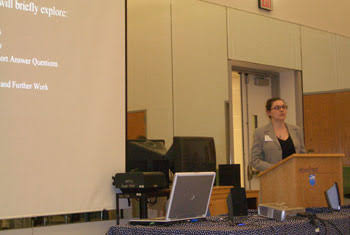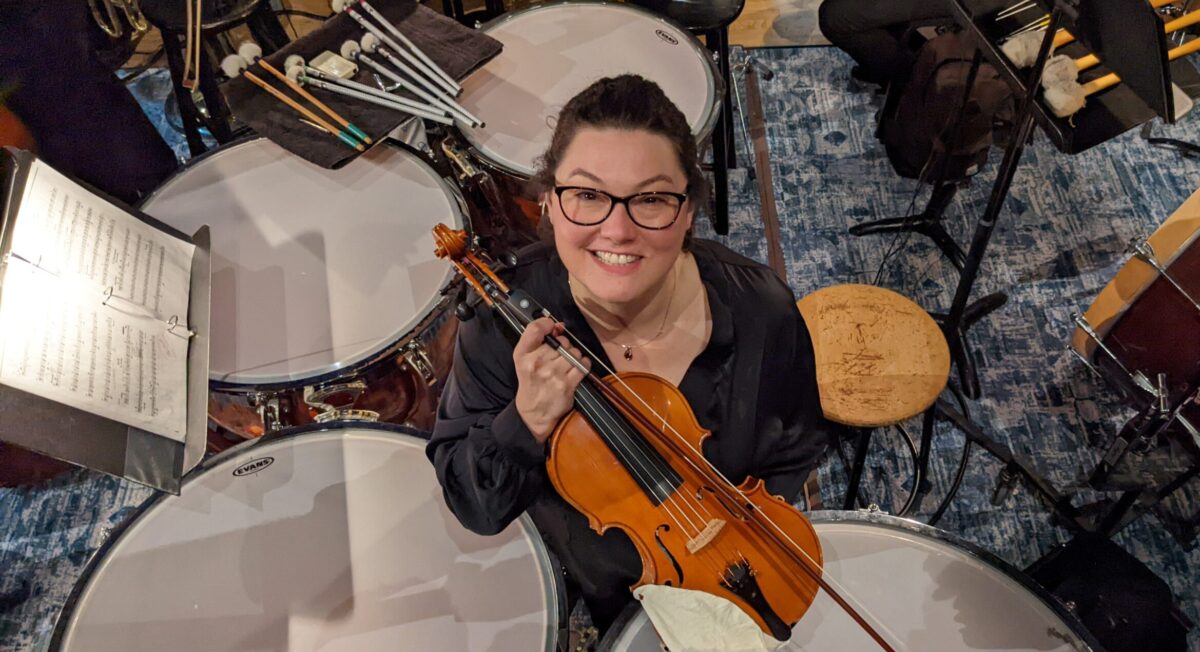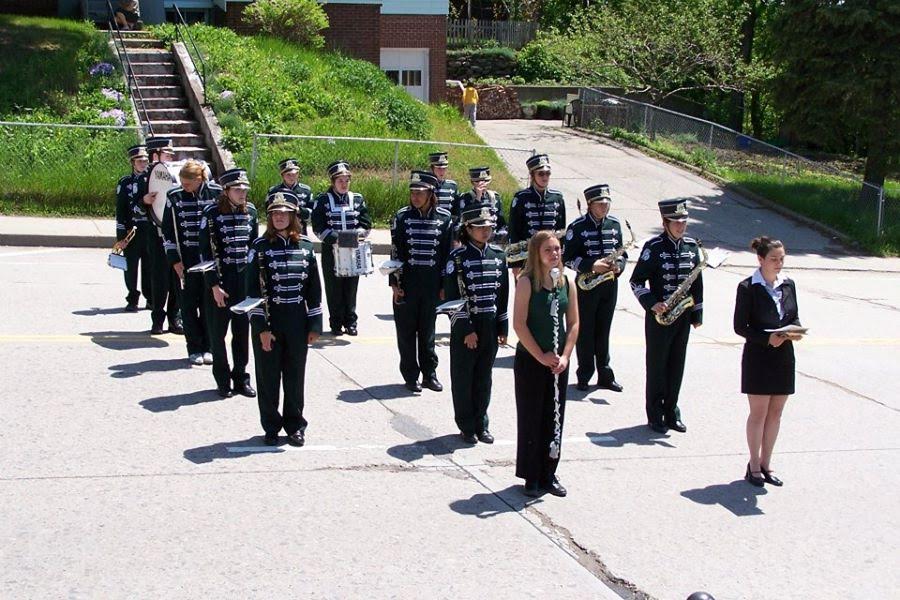Sewing (or, How I Refactor My Clothes)
In this week’s study, I write about the process of making clothing alterations, or “refactoring clothing” as my friend Pete Walen put it. Until he made that comment, I had never thought about sewing in relation to other skills I have. In this week’s etude, I show you how I refactor some clothing, talk about why it’s necessary and what I enjoy, and reveal some of the challenges, all while thinking about how these skills relate to software testing and refactoring software. And that poem from last week? It’s still in-progress.
The first time I sewed, I was five years old. My grandmother gave me “sewing cards”, cards of heavy cardboard that I could “sew” on, using a large plastic needle and yarn. That same year, my mother let me try her sewing machine. With guidance, I made a pencil case out of 1970’s stretch polyester fabric, black with white diamonds.
Fast forward to my first apartment. I got a sewing machine of my own, and made my first dress. I don’t have pictures, but it was a formal dress with a lace overlay. I struggled and struggled, understanding nothing about patterns or fit or measurements. I just assumed that the sewing instructions were like cooking instructions: follow the recipe, get the result. I did get a dress and it was wearable, but the fit was, well, off.
I’d always done alterations to my clothing by hand, for theater, for prom, even for my senior violin recital as an undergrad at the University of Vermont. Because, let’s face it, every human body is different, and no machine can make a thousand, or two thousand, or more garments to the unique specifications of each wearer. With all of the changes my body has encountered, whether through illness or age, I’ve found my sewing skills more necessary (and useful) than ever.
When I first got started with altering – ahem, refactoring – my clothes, I was at a stage in my life where I was less, well, big, and so I didn’t need to do as many alterations. My size back then made it easy for me to find clothes off the rack. I assumed my clothes would always fit, off the rack, with little adjustment. I bought my first good sewing machine in 2010, and learned how to properly hem pants. Next, I tried working on taking in the side-seams of dresses or shirts. This year, I shortened the sleeves of three vegan-leather jackets that I found on clearance! Most recently, after reading many books, watching lots of youtube tutorials, and practicing, I deconstructed dress pants, taking in the waist and seat, and reconstructed the pants. It’s something I detest, but at least I know I can do it.
The Project
Of course, now that I know I have this skill, I want to make everything fit better, and I have a stack of items “to sew” to prove it. This week, I worked on two items from my sewing pile, two blouses that I love, but that are a bit too large. I used a computer desk in my living room as a workspace (multi-purposing is key in under 700sq.ft), armed with my new Elna machine and my trusty Janome overlocker.

After setting up my workstation, I got to work fitting. For this post, I tried on the garment and took a picture first. Normally, I would start by turning the garment inside out and pinning (I like to use safety pins. They move around a lot less when I try things on). This part of the process is almost completely trial and error when working alone. With the shirt inside out, I pin a few places, turn it right side out, try on. What do I think?


I repeat this process as much as necessary to get a good fit. To be honest, a lot of how exact I am depends on a few things: how much I paid for the garment, the quality of the fabric, and the cost of making a mistake (Is the garment easy to replace? If I mess up, can I have a professional come in and help me out?) Here’s the part that is quite like refactoring – I am taking clothes that do what they need to do, but don’t function in the best way for my body, and reworking them so that they do function for my body. In this instance, for the second shirt, I actually tried AND pinned two different kinds of darts before settling on taking in the side seams. Once I did lots of fiddling back and forth between pinning and trying on, I was ready to sew.
For the bicycle shirt, I didn’t bother with a basting stitch (though I probably should have). Instead, I went direct to the overlock/serger, and I was done. If you don’t know what an overlock machine is, look at whatever shirt you have on now. Flip the bottom hem so you can see the inside. If there is a zig-zag looking stitch of thread, that was likely made on an overlock at the factory where your clothing was produced. Overlocks are great for keeping fabric from fraying. (Now you know!)

I tried to be more careful with the second blouse, DKNY blouse from the 2019 Fall collection. I really liked the fabric and design when I bought it. I couldn’t get the right fit, though, so I opted to go up a size and refactor. Because this fabric is delicate and the shirt was expensive, I did some basting stitches to test my fit.
However, I had some problems with the basting stitch. My machine made the worst sound as both threads knotted and jammed the machine. I had to debug! I raised the presser-foot and gently tried to release the threads, being extra careful not to damage the shirt. Once I had snipped some of the threads free, I could see that the bobbin thread was loose, resulting in a terrifying vision on a delicate fabric.
The thing was, I couldn’t find anything wrong with the bobbin when I pulled it out of the machine. It was wound tightly, no knots. I had placed it correctly and threaded it in the right direction. Stumped, I turned to my phone and searched loose bobbin thread. In what seemed like stack overflow for the craft set, I found the answer: the loose bobbin thread was a red herring. In my haste, I incorrectly threaded the top thread, which had the side-effect of causing a loose bobbin thread. So, I re-threaded the machine, and then removed the faulty stitches from the shirt.

Once I fixed my mistake and tried my shirt on, I was happy, so finished the side seams with my overlocker. Yes, I needed to iron the shirt. But when sewing for myself, I am far more focused on getting things done than on doing things 100 “by the book”, and that includes ironing.


Reflecting on the Process
As far as the sewing is concerned, I am happier with the general fit and feeling of these blouses now, since they fit the way I like. Every time I tailor clothing, I learn about how clothes are constructed. As I research different fit problems, I’ve learned new sewing techniques, which is a win-win!
I never thought about this process like refactoring, but in many ways, it’s so similar. I start out with someone else’s idea and fabrication of an item, and make changes so it is more fit for my purpose. When I encounter an issue, I have the core skills to make a solution happen, but I don’t necessarily know the specifics to solve my particular fit problem (Too much gap in the waist? Not enough definition in the stomach? Too short? Too long?). Sewing lets me use a machine to do work more efficiently, to see the results of what I imagine (think of it like a compiler for clothing – make a decision, execute the task, and, if you have done everything correctly, the end result is a great fitting shirt).
While I do wish I had more time and space to explore everything (I love exploring and trying things!), I appreciate that working from a refactoring space, instead of from scratch, gives me the opportunity to sew and see results from my work. Personally, I can learn a lot this way, and I found thinking about this quite fun. Thanks for checking this out 🙂





